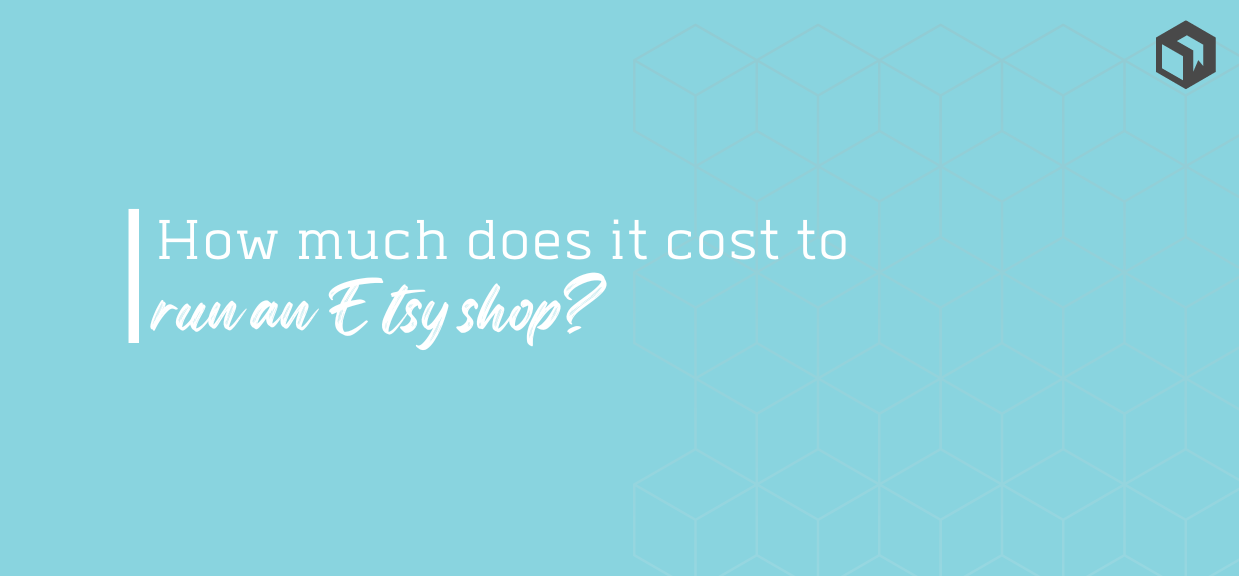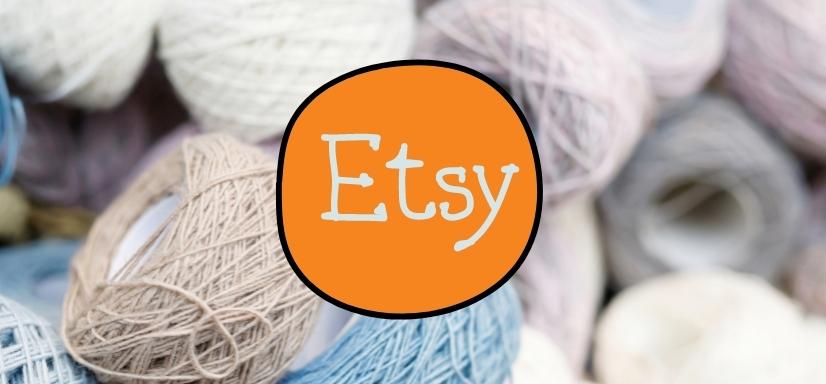How Much Does It Cost to Run an Etsy Shop?
How much does it cost to run an Etsy shop? In this article, we'll dive into the different fees you need to be aware of when selling on Etsy, and how to calculate your pricing to make the best profits.

Have you ever thought about opening your own Etsy shop? Maybe you’ve been making and selling crafts for a while, and you’re ready to take your business to the next level.
But how much does it cost to run an Etsy shop? Our article will delve into the fees and charges you’ll need to be aware of when selling on this popular marketplace, so you have the confidence to start listing your fabulous handmade products.
Ready to take your Etsy store to the next level?
Discover how Craftybase is the Etsy inventory software you've been missing out on: track raw materials and product stock, COGS, pricing and much more. It's your new production central.
What is Etsy?

Etsy is an e-commerce platform that focuses on selling handmade, vintage, and craft supplies. Items sold on Etsy must be handmade, vintage (at least 20 years old), or craft supplies.
How much does Etsy cost?
There are three different fees and charges associated with selling on Etsy: listing fees, transaction fees and payment processing fees.
Let’s go through each of these now:
Listing Fees

Every time you list an item for sale on your Etsy shop, you will be charged a $0.20 listing fee. Listings are active for four months, or until the item is sold.
Transaction Fees

Whenever you make a sale on Etsy, you will be charged a 6.5% transaction fee.
The Etsy transaction fee is calculated based on the total amount of the sale, including shipping and taxes.
Payment Processing Fees

In order for Etsy to process the payment (via Etsy Payments), you will be charged a percentage of between 3-4% + $0.25 USD payment processing fee on every sale. The percentage varies by the country you are based in.
Read more: The complete guide to Etsy fees (including real shop examples).
An example basic cost breakdown when selling on Etsy
Assuming you are based in the United States, and you make a sale of $100 with shipping and taxes totaling $10, your fees would break down like this:
-
Listing Fee: $0.20
-
Transaction Fee: $6.50 (6.5% of $100)
-
Payment Processing Fee: $3.75 (3% of $100 + $0.25)
-
Total Fees: $10.45
Fees are deducted from the total revenue you receive from each sale. So in this example, you would actually receive $89.55 from the sale of your item.
Can Etsy fees be avoided?
There is only one way to avoid paying Etsy fees: to offer your items for sale outside of the Etsy platform. This could mean setting up your own website or utilizing another selling platform such as Amazon Handmade, eBay (or if you sell wholesale, Faire)
Of course, by selling outside of Etsy you will also be missing out on all of the benefits that come with using this popular marketplace, such as the built-in audience, the ease of use, and the payment processing.
Other costs to be aware of when selling on Etsy
In addition to fees that are charged directly by Etsy, you’ll want to ensure you are also factoring in the costs to make your product and deliver it to the customer, along with any taxes appliable to selling online. This is really the key to making money selling handmade goods online.
Let’s cover each of these costs now to see how they work:
Material and Labor Costs
If you want to make a profit, you’ll need to account for all the materials used in your product and your time spent making it.
To calculate your make costs, start by adding the cost of all the materials you used to make the item. Then, calculate how much time it took you to make the item, and multiply that by your hourly wage.
For example, let’s say it took you two hours to make a scarf that cost $10 in materials. If you wanted to earn a $15/hour wage, your make cost would be $30 ((2 hours x $15/hour) + $10 in materials).
Remember, these are just estimates. You don’t need to be exact, but you want to ensure you are accounting for all your costs so you can price your items accordingly.
Shipping Costs
The cost of shipping your items will vary depending on the size, weight, and distance the package needs to travel. You will need to factor shipping costs into the price of your items when listing them for sale.
See also: Reasons to offer free shipping in your Etsy store →
Taxes
Depending on where you live and what you’re selling, you may be required to collect and pay taxes on your Etsy sales. For example, in the United States, many sellers must collect and pay state sales tax on all transactions.
Read more: How does Etsy handle Marketplace Facilitator Tax?
Is it worth it to sell through Etsy?
The decision of whether or not to sell through Etsy is a personal one. There are pros and cons to using Etsy as a platform for your business.
Some people love Etsy because it’s an easy and convenient way to sell their products. Etsy does a lot of the heavy lifting for you, from processing payments to marketing your items. And because Etsy is such a popular platform, it’s easy to reach a wide audience of potential customers.
However, some people don’t like Etsy because of the fees associated with selling on the site. When you factor in listing fees, transaction fees, payment processing fees, shipping costs, and taxes, it can eat into your profits pretty quickly.
It’s also important to remember that because Etsy is so popular, there is a lot of competition. You’ll need to make sure your items are well-priced and accurately described if you want to attract buyers.
Does Etsy has a lot of fees in comparison with other online marketplaces?
The answer to this question may vary depending on who you ask, but the general consensus seems to be that Etsy’s fees are on the high end when compared to other online marketplaces.
For example, Amazon charges a $0.99 fee for each item you list for sale, plus a referral fee that ranges from 6% to 20% of the total sale price.
Ebay also charges a listing fee of $0.35 per item, plus a Final Value Fee that ranges from 2.15% to 12% of the total sale price (plus a $0.30 charge if you use PayPal).
So, when compared to these other platforms, Etsy’s fees are definitely on the high end. However, it’s important to remember that Etsy is a different type of platform. Amazon and Ebay are massive marketplaces selling just about everything under the sun. On the other hand, Etsy is a niche marketplace specializing in handmade goods, vintage items, and craft supplies.
Because of this, there is a lot less competition on Etsy. And, because Etsy does such a great job of marketing and promoting its sellers, it’s easy to reach a wide audience of potential customers. Etsy is one of the most popular online marketplaces for handmade goods, but it’s not the only option out there. If you’re considering selling your products online, be sure to research all the different platforms available to you. Each one has its own set of fees and rules, so it’s important to choose the one that makes the most sense for your business.
How to calculate pricing to make profits on Etsy
In order to be successful selling on Etsy, it’s important to have a clear understanding of your costs so you can price your items accordingly.
Here’s a quick breakdown of how to calculate the prices for your items:
-
Figure out your cost of goods sold (COGS). This includes the cost of materials and your labor. You can use a spreadsheet for this, or dedicated etsy inventory and pricing software like Craftybase to calculate this for you based on your real time material costs.
-
Add on any additional fees associated with selling on Etsy, such as listing fees, transaction fees, shipping, and payment processing fees.
-
Calculate your desired profit margin. A good rule of thumb is to triple your COGS to reach a standard retail price. Then, add on your additional fees to reach your final price.
For example, let’s say you’re selling a handmade mug that costs $5 to make. You’ll need to factor in the cost of materials, labor, and shipping when calculating your COGS.
Let’s say those costs add up to $2.50. To reach a standard retail price, you would multiply your COGS by 3 ($2.50 x 3 = $7.50). Then, you would add on your additional fees ($0.20 + $0.375 = $0.575). Your final price would be $8.075.
Using software to track your Etsy costs and pricing
As your business grows, it can be difficult to manually track all your costs. That’s why we recommend using software like Craftybase to help you manage your Etsy pricing.
Craftybase is an inventory and pricing software that integrates with Etsy. It automatically tracks your material costs and calculates your COGS in real time. This means you’ll always have an accurate picture of how much it costs to make your products.
In addition, Craftybase can help you manage your listing fees, transaction fees, shipping costs, and payment processing fees. It can also calculate your desired profit margins for you so you can easily price your items for maximum profitability.
If you’re serious about selling on Etsy, we highly recommend using Craftybase to help you manage your pricing. It’s the best way to ensure you’re always making a profit on your handmade goods.
Take our 14 day free trial today!
What’s Next?
Now that you know how much it costs to run an Etsy shop, you can start pricing your items for maximum profitability.
For more help with pricing your products, check out our guides on how to calculate your cost of goods sold and how to determine your desired profit margin.
Also check out our Ultimate Guide to Etsy Inventory Management for ways you can streamline managing your stock levels.
